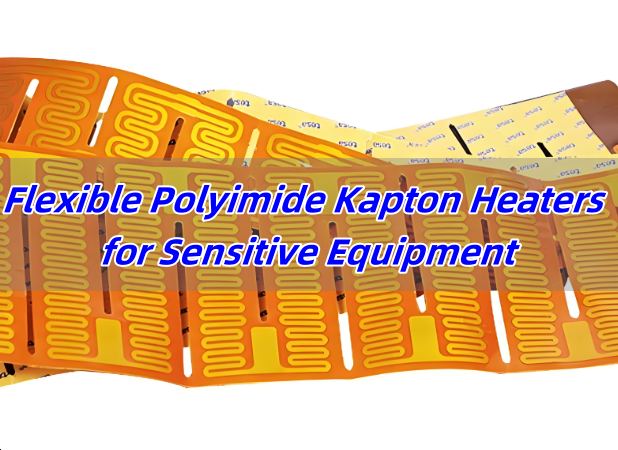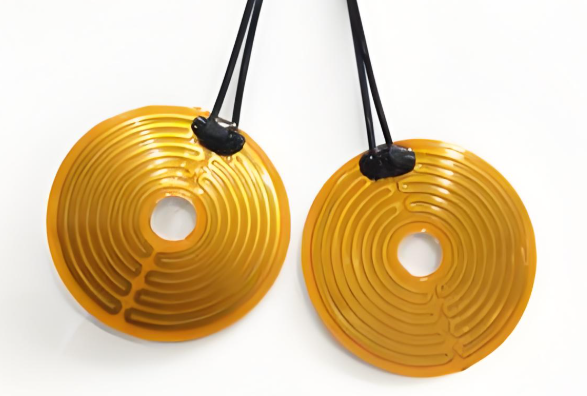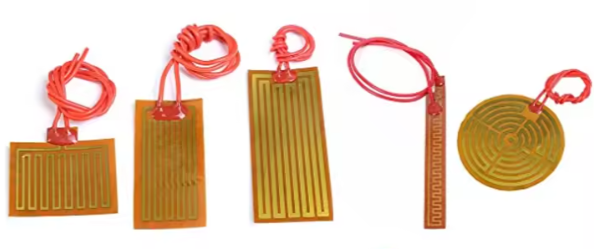If you’ve ever tried to integrate a heating element into tight, sensitive, or weight-restricted equipment, you know the struggle.
Traditional heaters—bulky silicone mats, rigid ceramic plates, or metal cartridges—can cause more problems than they solve.
This is where Kapton heaters—also known as flexible polyimide Kapton heaters or thin film heaters—deliver an elegant, engineering-friendly solution.
If you are interested in Kapton heaters, welcome to contact us at sales@best-heaters.com.

A Kapton heater is a thin, lightweight, and highly flexible heating element made from polyimide film laminated with an etched metal foil. Despite its ultra-slim profile, it provides precise, even heating across surfaces.
Kapton heaters are not just “small heaters“—they are high-performance thermal management tools trusted in industries where failure is not an option.
You’ll find them in satellites, medical diagnostic devices, laboratory instrumentation, and precision battery systems.
Key characteristics:
At the core of a kapton heater is an electrically conductive heating element, typically made from etched copper, nickel, or stainless steel foil. When an electrical current passes through this foil, resistance causes it to generate heat.
The heat is then transferred through the polyimide Kapton layer, which is extremely thin yet provides high dielectric strength and excellent thermal stability. This design allows the heater to deliver consistent, uniform heat to surfaces without adding bulk or weight.
For precision applications, custom kapton heaters can be manufactured with intricate heating patterns, multiple power zones, and integrated temperature sensors for accurate thermal control.
If your application demands:
…then a flexible polyimide Kapton heater is one of the few heating solutions that can check all the boxes.
For example:

1. Ultra-Thin Profile
2. Wide Temperature Range
3. Flexible & Lightweight
4. High Dielectric Strength
5. Customizability
6. Chemical Resistance
Flexible polyimide kapton heaters are designed to operate at high continuous temperatures. Most standard designs can withstand up to 260°C (500°F), with short-term exposures reaching 300°C (572°F).
Their broad temperature range—from -200°C to +260°C—makes them suitable for both extreme cold and high-heat environments, such as satellite electronics, semiconductor processes, and environmental test chambers.
Kapton itself is not primarily a thermal insulator—it’s a high-performance electrical insulator with excellent thermal stability. Its thin profile means heat passes through efficiently, which is essential for quick response times in thin film heaters.
However, Kapton does help prevent electrical shorts and withstands thermal cycling without degradation, making it an ideal encapsulating material for heating elements.

Power consumption for kapton heaters depends on size, watt density, and application temperature.
Because they’re highly efficient thin film heaters, most of the electrical energy is directly converted to heat with minimal losses, making them energy-efficient compared to bulkier heating methods.
| Feature | Kapton Heater | Silicone Heater |
| Thickness | 0.005″–0.015″ | 0.03″–0.125″ |
| Max Temp | 260°C continuous | 200°C continuous |
| Weight | Extremely light | Heavier |
| Flexibility | High bendability | Good but bulkier |
| Ideal Use | Precision, tight spaces | Rugged, general heating |
If you need ultra-thin, lightweight heating with high precision, kapton heaters are the better choice. For rugged, heavy-duty heating in outdoor or industrial settings, silicone heaters may be more suitable.
Because they are extremely thin, flexible polyimide kapton heaters can bend to very tight radii without damage. The bend radius is typically 5-10 times the material thickness. For example, a 0.010″ thick heater could safely bend around a 0.050″ to 0.100″ radius.
That means even the thinnest custom Kapton heaters can wrap around tight curves without damage—perfect for battery packs, pipes, and cylindrical sensors.

Standard kapton foil heaters range from 0.07mm to 0.40mm thick, depending on the foil thickness, adhesive type, and any additional layers like PSA backing.
They are easy to install in tight spaces without affecting device dimensions or weight—one of the main reasons engineers choose them over other heating options.
When off-the-shelf heaters don’t meet your needs, custom Kapton heaters are the answer.
We specialize in design-to-delivery solutions:
Whether you need one prototype or ten thousand production units, we can deliver a heater that fits your dimensions, your power needs, and your environmental challenges.
1. What is the typical maximum temperature a Kapton heater can handle?
Most Kapton heaters safely operate continuously up to 260°C (500°F), with short-term tolerances reaching 300°C (572°F). This wide range suits both high-heat industrial processes and low-temperature applications like anti-condensation.
2. How thin are Kapton foil heaters compared to other heating elements?
Kapton foil heaters typically range from 0.005 to 0.015 inches thick. This ultra-thin design allows them to fit in tight spaces where traditional heaters like silicone mats (0.03″–0.125″) are too bulky.
3. Can Kapton heaters be bent or shaped?
Yes. Thanks to the flexible polyimide substrate, Kapton heaters can bend around tight radii — usually five to ten times their thickness.
4. How much power does a typical Kapton heater use?
Power consumption depends on size and watt density: small units may use only a few watts, while larger or multi-zone custom Kapton heaters can draw hundreds of watts. They convert nearly 100% of electrical energy into heat, making them highly efficient.
5. What materials are used in Kapton heaters?
The heating element is usually etched copper, nickel-chrome, or stainless steel foil laminated between layers of Kapton polyimide film. The polyimide acts as an electrical insulator and thermal conductor.
Simply drop your email or phone number in the contact form, and we'll promptly reply you shortly.